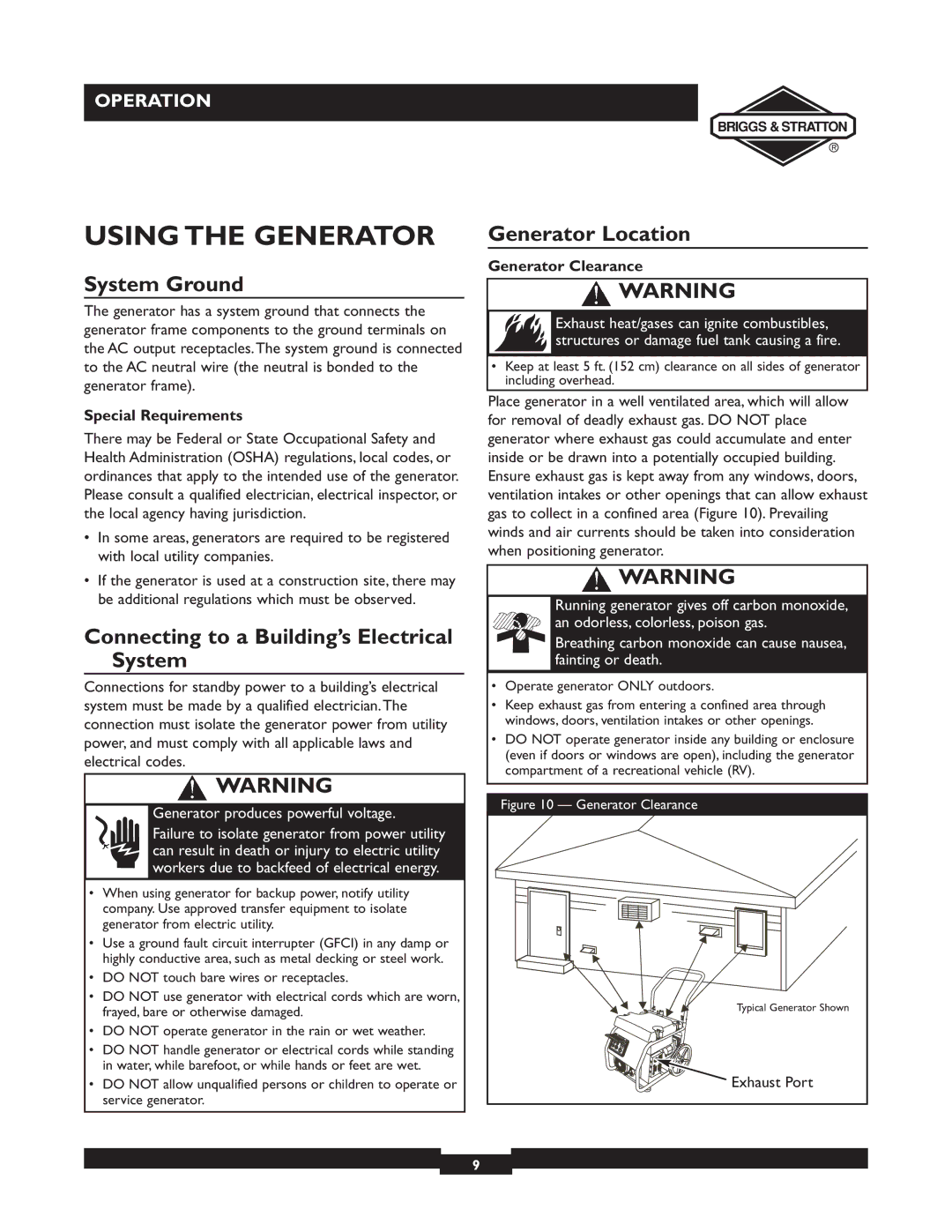30253 specifications
Briggs & Stratton 30253 is a powerful and versatile portable generator designed to meet the needs of both homeowners and outdoor enthusiasts. Renowned for its reliability and efficient performance, this generator provides a dependable source of power during emergencies, outdoor events, or for recreational activities.One of the standout features of the Briggs & Stratton 30253 is its robust engine. Powered by a Briggs & Stratton 800 series engine, it delivers a solid output, ensuring that you have enough energy to run essential appliances and tools. With a running wattage of 3,000 and a starting wattage of 3,500, this generator is capable of powering items such as refrigerators, lights, and power tools simultaneously, making it perfect for home backup during outages or for use on job sites.
The design of the 30253 emphasizes portability and ease of use. It features a compact and lightweight frame, allowing for easy transport and storage. The built-in rugged handle and never-flat wheels provide added mobility, enabling users to maneuver the generator effortlessly across various terrains. This makes it an ideal choice for camping trips, tailgating, or any outdoor project where power is needed.
In terms of technology, the Briggs & Stratton 30253 is equipped with a reliable low-oil shutdown feature, which automatically turns off the engine when oil levels are critically low, safeguarding the generator from potential damage. Additionally, the generator is designed with a durable steel frame and a protective roll cage, enhancing its longevity and performance in tough conditions.
Noise is a common concern with generators, but the 30253 operates at a relatively quiet level, making it more suitable for residential areas or during night use, allowing you to enjoy power without disturbing your neighbors.
Another key characteristic of the Briggs & Stratton 30253 is its user-friendly control panel. The panel includes multiple outlets, including two 120V household outlets and a 12V DC outlet, providing versatility for connecting different devices.
In summary, the Briggs & Stratton 30253 generator combines power, portability, and advanced features, making it an excellent choice for those in need of reliable electricity in various settings. Whether you're preparing for a power outage or setting up for a weekend getaway, this generator is designed to fulfill your energy needs efficiently and effectively.

